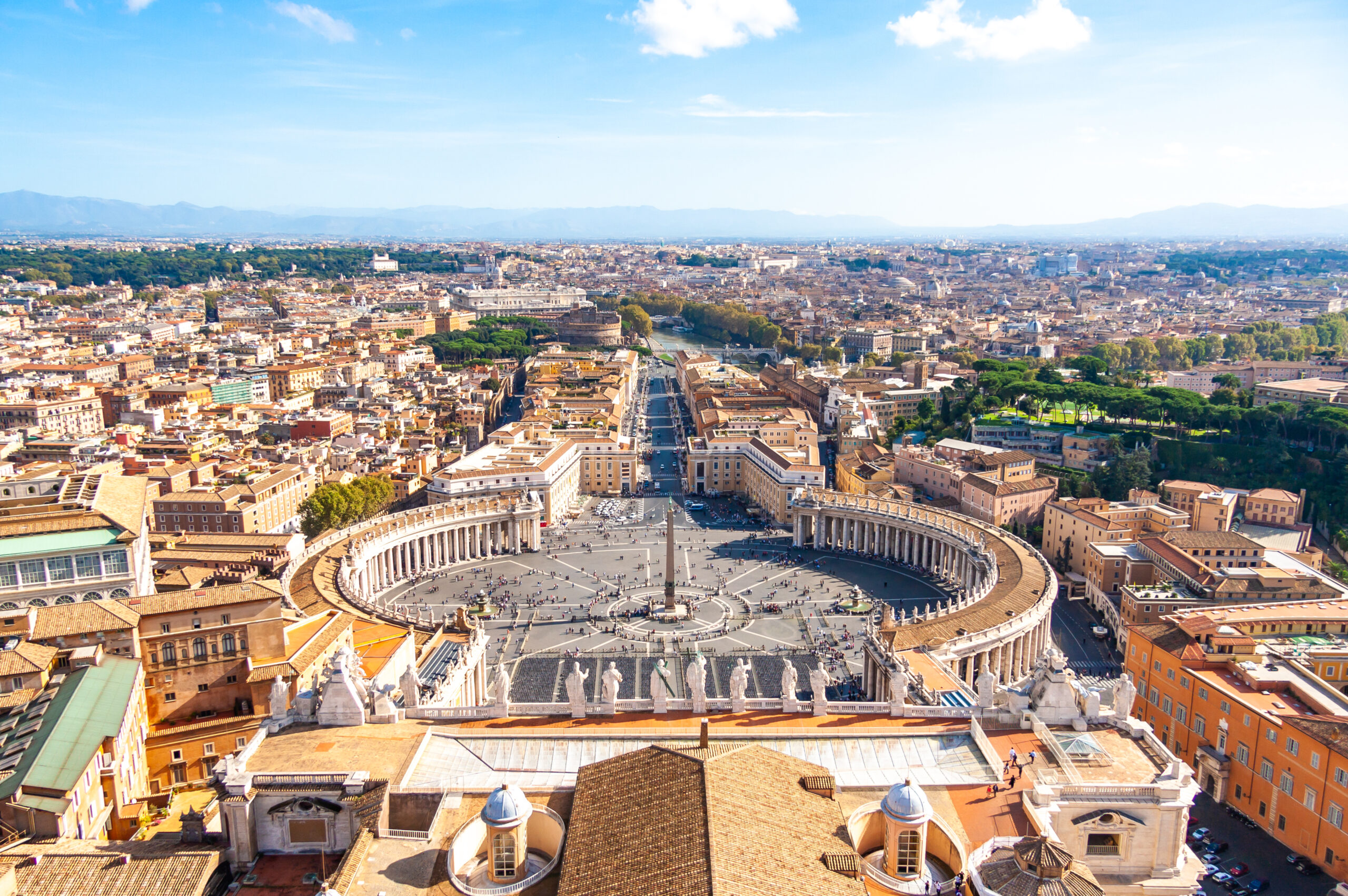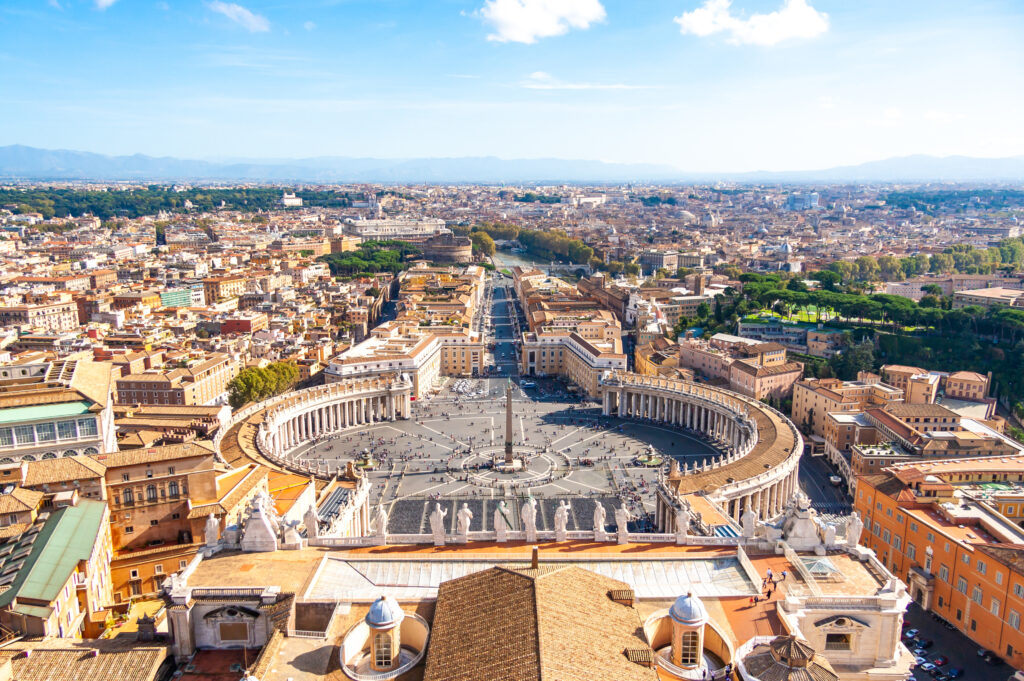We’ve all heard the old adage, “It’s not the size that counts,” and this certainly applies to some of the world’s tiniest nations. From religious city-states to mega-rich tourist destinations, here we put a spotlight on some of the world’s smallest countries by area. These 7 miniature nations may shrink into insignificance on a map when compared to giants like Russia and Canada, but they all have their own unique stories to tell, such as interesting origins, customs, commodities, and people.

Vatican City (0.17 Miles2)
Surrounded by the city of Rome, the pocket-sized Vatican City is the smallest country in the world, covering a mere 0.17 square miles. This city-state is the center of the Catholic Church, home to the Pope’s residence and the awe-inspiring St. Peter’s Basilica, a masterpiece of Renaissance architecture. The Sistine Chapel, adorned with Michelangelo’s famous frescoes, also lies within its walls.
With a population of around 800, primarily clergy and personnel of the Holy See, Vatican City has a powerful atmosphere of reverence and historical significance. Interestingly, this tiny nation boasts its own postal system, currency, and even a national radio station!
Monaco (0.78 Miles2)
Monaco is the world’s second smallest country at 0.78 square miles. It is located along the French Riviera, and has become synonymous with glamor, luxury, and celebrities seeking privacy and exclusivity.
Its most famous district, Monte Carlo, is renowned for its opulent casinos, designer boutiques, and the iconic Formula One Grand Prix race track. Multi-million dollar yachts populate the harbor, and the skyline is dominated by luxurious hotels catering to the world’s elite.
Despite its tiny size, Monaco really excels when it comes to high-end experiences and breathtaking coastal views. It also holds the title for the highest population density in the world, with over 38,000 residents crammed into its limited landmass.
Nauru (8.1 Miles2)
Across the Pacific Ocean, on the tiny island nation of Nauru (only 8.1 square miles in size), there is a less prosperous story to tell. Nauru was once rich in phosphate rock, which fueled its small economy for years, until the environmental consequences of extensive mining eventually left it deserted and barren, with limited vegetation.
Despite the challenges it has faced, Nauru’s culture thrives, with strong traditions built on a rich, proud history that is deeply connected to the Pacific Ocean. Fishing and tourism now play a vital role in the island’s current economic viability, with surprisingly pristine beaches and unique biodiversity attracting a niche set of travelers.
The island nation’s story serves as a reminder of the delicate balance between resource extraction and environmental sustainability, and the damage that can be done by careless over-exploitation.
Tuvalu (10 Miles2)
Another Pacific paradise is Tuvalu, an idyllic island nation composed of nine atolls scattered across only 10 square miles. Sadly, it faces an environmental threat not of its making—rising sea levels.
It’s one of the most vulnerable countries on Earth, with its highest point being a mere 13 feet above sea level. Despite the challenges, Tuvaluans maintain a strong cultural identity and are renowned for their warm hospitality and traditional crafts.
Ironically, it is the sea itself that offers economic opportunities, with fishing and tourism the most lucrative industries. Its beautiful turquoise waters and untouched coral reefs can seem like paradise, but Tuvalu’s fight for survival against climate change will require global collaboration and international efforts if the nation is to exist in the future.
San Marino (23.6 Miles2)
Perched atop a mountain in Italy, San Marino boasts the title of the world’s oldest surviving republic. Founded in the 4th century AD, it has maintained its independence for over 1,700 years, weathering world wars and civil disputes. Clearly, the people are tough and resilient!
Medieval castles, charming piazzas, and historical landmarks stand as a testament to its long history, and it is a popular tourist hotspot. Duty-free shopping and stunning panoramic views from its mountaintop location also draw crowds, and visitor dollars contribute significantly to the small local economy. San Marino is a unique glimpse into Europe’s past, and historians deem it an important site of cultural and historical significance.
Liechtenstein (62 Miles2)
Lying to the east of Switzerland and due west of Austria lies Liechtenstein, quietly nestled between these two well-known, much larger alpine countries. It’s a tiny principality spanning a mere 62 square miles, and its mountainous landscapes are strikingly dramatic. It has charming villages that have retained many of its long-held traditions.
Vaduz, the capital city, is known for its picturesque castle overlooking the Rhine Valley. Tourism plays a significant role in the economy, with visitors drawn to the breathtaking scenery, winter sports opportunities, and unique culture.
Marshall Islands: A Scattered Paradise (70 Miles2)
The Marshall Islands comprise 29 atolls scattered across a vast expanse of the Pacific Ocean, encompassing roughly 70 square miles of land. This island nation faces unique challenges, including rising sea levels and the long-term consequences of nuclear testing conducted in the mid-20th century.
Despite these hardships, the Marshallese people maintain a persistent cultural identity and are famous for their warm island hospitality and beautifully intricate handmade crafts. Fishing and tourism are important, with some unspoiled coral reefs and unpolluted turquoise waters still available, attracting travelers seeking an island paradise with a unique and interesting history.







